In what’s effectively the fruit of adultery from the S5 aero sprinter and the Aspero gravel racer, the new Cervelo Caledonia 5 sits in a surprisingly uncrowded market segment. It’s a bike for those who are forever trying to stuff the biggest tyre possible into their race machine or turn their gravel race bike into a roadster.
Put another way, the Caledonia 5 is racier than the vast majority of endurance road bikes out there, and it’s more versatile in function and fit than dedicated performance machines. Its closest rivals are arguably the BMC Roadmachine, the 3T Strada DUE, and maybe the latest Specialized Roubaix, and yet, Cervelo has seemingly crammed more performance and more spacious room for at least 34 mm rubber into its new offering.
And while the Caledonia 5 is the fancy model we tested, there’s a pared-back and more affordable version – simply named the Caledonia – that’s just as interesting. And yes, both are disc-only.
I’ve spent some time learning about this do-it-all Classics-inspired machine, while Caley Fretz has spent equal time riding the thing. And in both cases, we agree this is one worth staying awake in class for.
Inspired by the R3 Mud
Story Highlights
- What: Cervelo’s wholly-new road bike intended for Paris-Roubaix through to all-road useage.
- Key features: Aero design from the S-Series, splashings of the R-Series and the stiffness of the Aspero. Concealed cables, room for 34 mm tyres (or more), and full-length mud guards.
- Weight: 936 g (claimed frame weight), 370g (claimed fork weight).
- Price: Starting from US$2,900 / £2,799 / AU$4,300 (Caledonia 105) and up to US$11,000 / £9,699 / AU$14,500 (Caledonia 5 Dura-Ace Di2).
Under the likes of Fabian Cancellara, Stuart O’Grady, and Johan Vansummeren, the Cervelo R3, at least in various quietly tweaked forms, has been the first to cross the finish line at Roubaix. Somewhere between 2011 and 2013, Cervelo gave this cobble-conquering machine a name: the R3 Mud. It was a bike that from afar looked much like the square-tubed lightweight R3, but a tape measure would reveal lengthened stays and a longer fork, each offering increased stability, a small dose of additional frame flex, and a whole lot more tyre clearance.
And while that R3 Mud did make it onto a few select bike shop floors simply because the UCI rules required as much, it wasn’t until the release of the C-Series that Cervelo truly had a bike designed for the masses with all-day riding in mind.
That C-Series is now gone, and in its place sits the wholly new Caledonia. It’s a bike that stays true to Cervelo’s performance heritage and was made with Sunweb racing the cobbled Classics in mind. Equally, Cervelo claims it was designed to meet the needs of its own staff who were seeking something that filled the gap between the S5 and the Aspero.
In the end, the Caledonia name is quite telling of what this new bike aims to do. It’s a name that pays homage to the Toronto-based road that Cervelo headquarters were located at, and as the company is in the midst of moving country to Orange County, California, this new model looks back at the terribly kept, pot-hole riddled, broken asphalt that Cervelo staff used to race along on their lunch rides – their hell of the north, if you will.
A fit with huge range
The Caledonia 5 offers figures intended to fit a wide range of riders, and at their lowest, the stack figures are the same as the current R3. Admittedly, the R3 is slightly relaxed when compared to the top-tier R5 or Cervelo’s aero bikes, but it’s a fit that remains sporty without being elitist. From there, there’s plenty of room to relax things, and the use of an optional 20 mm headset cap and the allowance of up to 40 mm of spacers can setup the Caledonia to be as tall as the outgoing C-Series.
Geometry numbers listed are based on the low 7 mm headset top cap.
Compared to the R-series, Cervelo has slowed the handling ever so slightly in an effort to add stability and make the bike more manageable once fatigue sets in. This has been achieved by both increasing the trail figure (which is still a quick 58.5 mm) and growing the wheelbase length. And in the case of the trail figure, Cervelo has kept it consistent across all six frame sizes by using three different fork offsets (59, 53 and 50 mm). The chain stay length is kept a shortish 415 mm across all sizes.
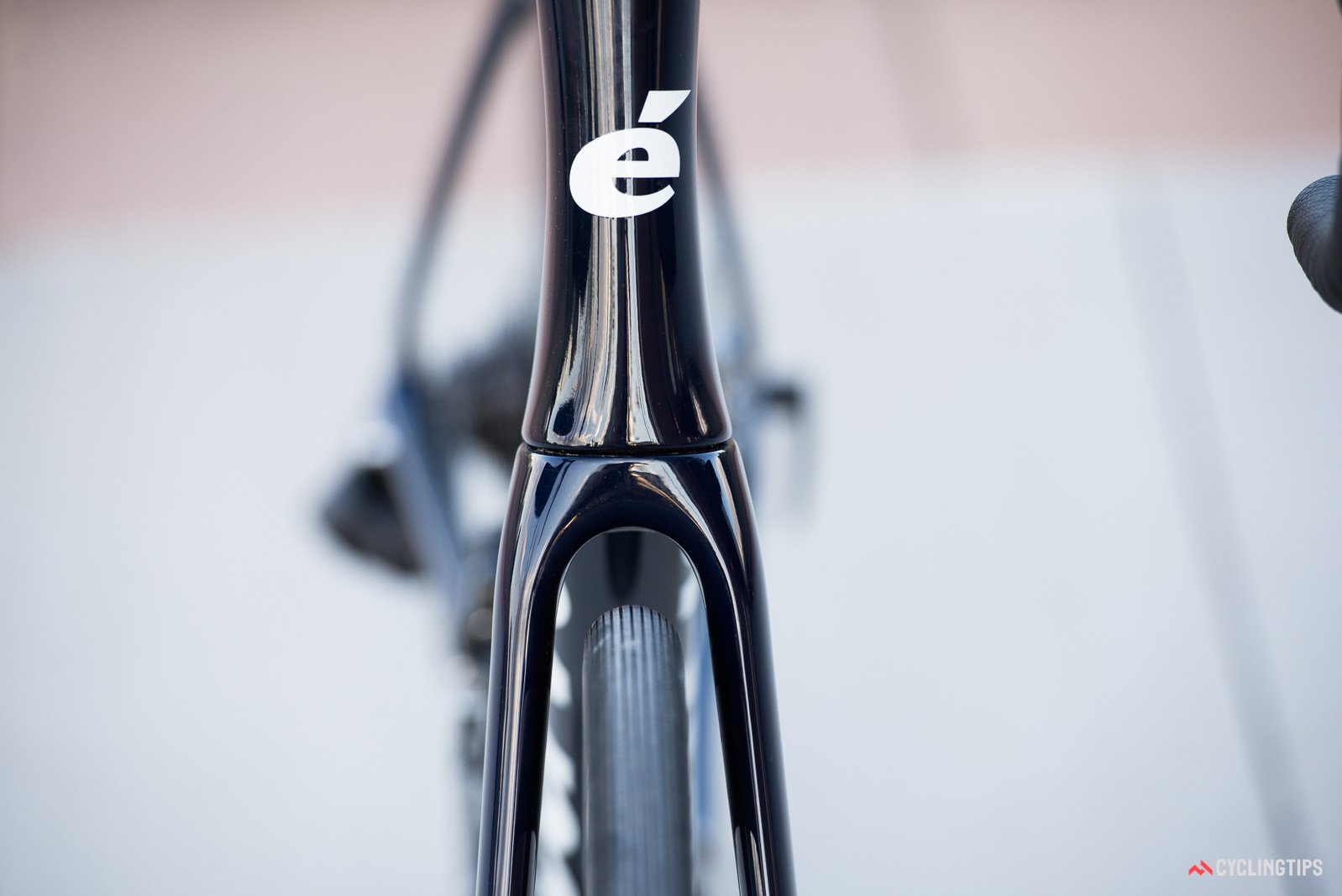
This thing has tyre clearance for days (actual 31 mm measured width tyre pictured).
Additionally, the bottom bracket height has been dropped in order to retain stability with the larger tyres, and gets as low as 76.5 mm on the smallest sizes. How much larger are those tyres? Cervelo has equipped all of its Caledonia bikes with tubeless-ready tyres that measure an actual 31-32 mm in width, and there’s room for 34 mm measured rubber, too. Unofficially, those measurements are typically conservative and so the daylight surrounding should allow it to go wider yet.
Aero and accessory integration
In the case of the Caledonia 5, the cockpit components are all Cervelo’s own and are intended for completely internal cable routing. It’s not quite as wild as the one-piece spaceship cockpit found on the S5, but rather it’s a refinement of S3’s more usual-looking two-piece setup. Either way, it looks clean. However, the fully concealed cable routing is limited to electronic shifting drivetrains only. Mechanical shifting can be used with the Caledonia 5, but the gear cables are left in the wind until reaching the cable/junction port at the frame’s down tube.
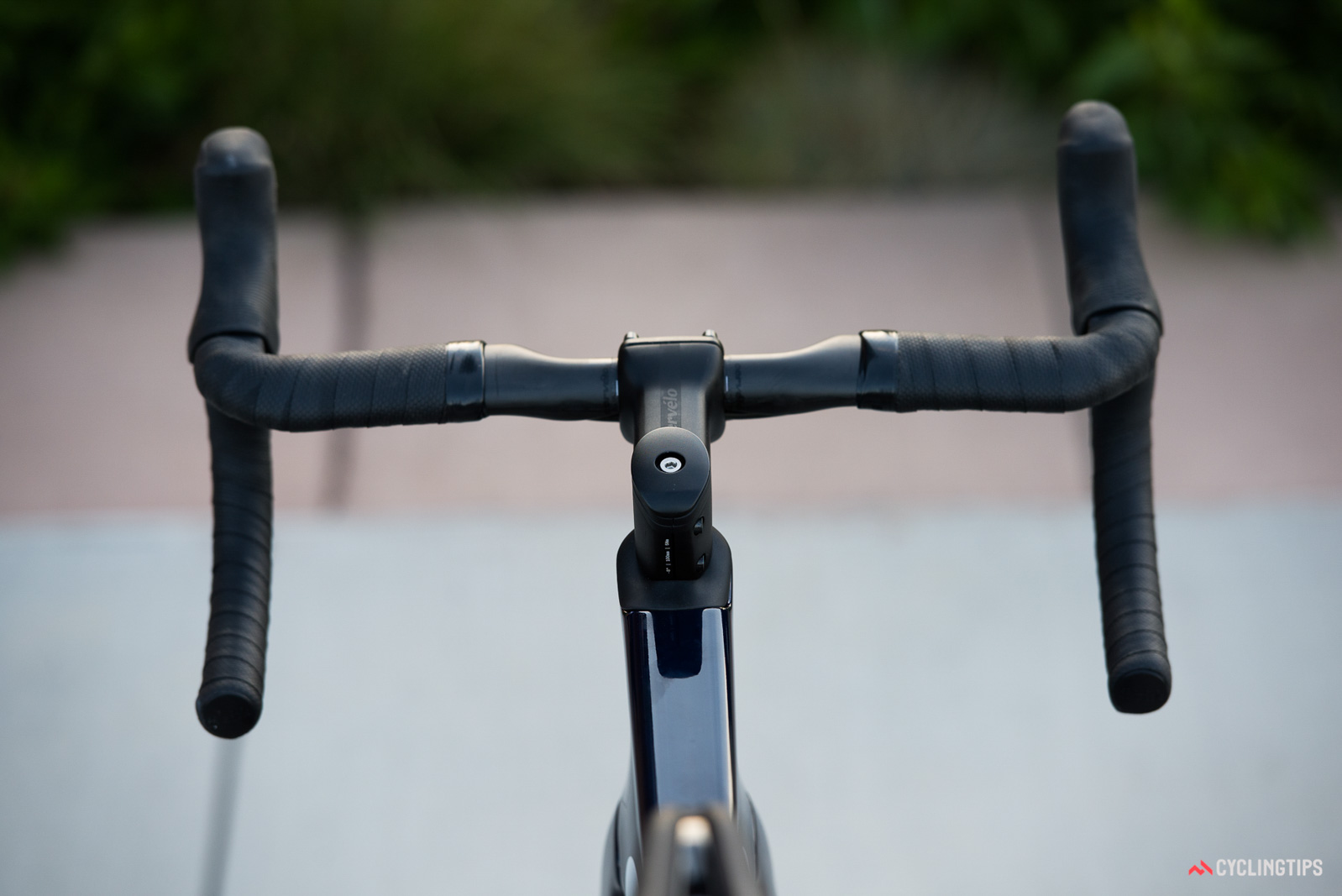
Clean.
The stealthy setup consists of Cervelo’s existing AB09 carbon handlebar which offers an ergo top shape and compact bend, with widths ranging from 38 to 44 cm. This handlebar offers internal wiring holes for Di2, and features a large opening at the back of its 31.8 mm clamp section for the cables to spill into the stem.
The matching stem is Cervelo’s own, too, and comes in carbon (ST31) and alloy (ST32) options. The stems are available in 80-130 mm lengths for the carbon (160 g in a 100 mm length), and 70-130 mm lengths in the alloy (210 g in a 100 mm length), each with a nine-degree drop. Cervelo has updated its design to allow the stem to be flipped into an upright position, although they (jokingly) admit the graphics are intentionally prohibitive for making use of this feature.
The aero-shaped headset spacers are the same split variant as the S3, and allow for stem height adjustment without having to cut or disconnect things that contain liquid (brakes). And the spacers can be flipped to be used on top of the stem while you dial in that fit, too. Want to swap out the stem length? Well, you will need to disconnect the brake lines for that.
Once run through the handlebar and stem, the cables are then guided through Cervelo’s custom headset top cap. From here, a D-shaped fork steerer comes into play, which sees the cables run down the front of the flat-faced steerer. And like the similar designs we’ve seen from BMC, Trek, Scott and a handful of others, the 1 1/2″ (lower) and 1 1/4″ (upper) headset bearings are trapped by the cables.
Officially Cervelo states the system must be used with its own stems and handlebars designed with the internal cabling in mind. However, I can’t help but speculate that at least the handlebars of similar aftermarket designs, such as FSA’s ACR or Deda’s DCR, could be matched to Cervelo’s stems with success.
Cervelo has a new integrated computer mount. The design is quite similar to the previous Barfly Faceplate system that Cervelo and 3T used which sandwiched the mount between the stem faceplate and the handlebar. Cervelo’s own version is designed around the GoPro universal interface, from which the computer mount or other accessories attach to. It is backwards compatible with previous open-slot stems, too.
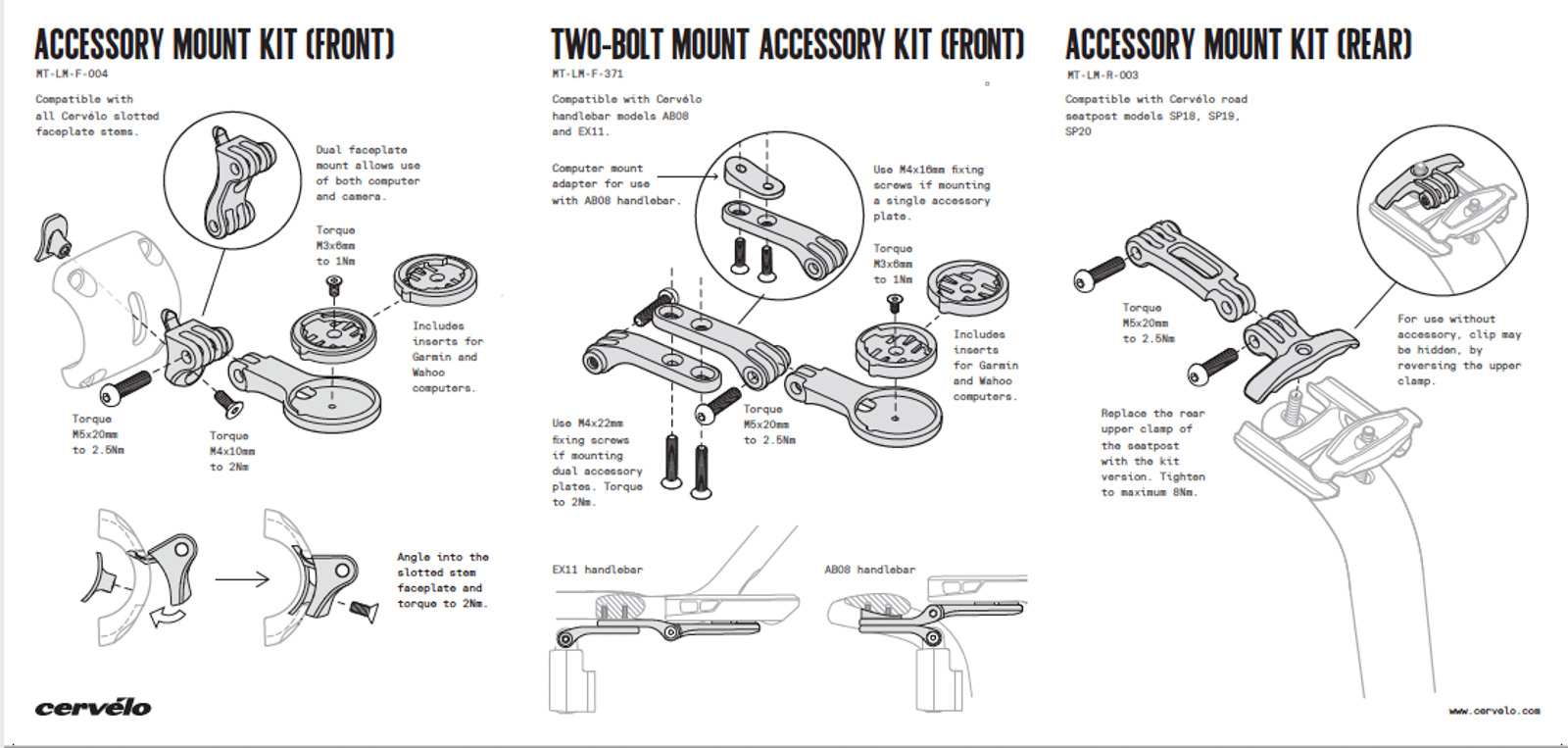
The GoPro universal attachment provides plenty of aftermarket options, too.
Another cleverly integrated mount is seen at the seat post rail clamp, with another GoPro interface (aka, prong) provided. As part of the saddle rail clamp, the piece can be flipped to be either out of sight or placed for use. From there, there are multiple rear light, camera, and even saddlebag options intended to directly fit this universal mount.
Finally, the frame offers full-length fender compatibility front and rear, and does so in a non-intrusive way for those living in drier areas. Fenders are attached to hidden mounts in the chainstay crotch (Cervelo’s words) and the crown of the fork. Otherwise, Cervelo uses removable pieces at the dropouts (sandwiched with the thru-axles) and the seat stays, which are made a little more robust than what was used on the C-Series.
The little pieces stay mounted to the fenders for easy future handling (and relatively easy wheel removal). This approach means the Caledonia will fit aftermarket fenders, with Portland Design Works, Planet Bike and SKS models tested by Cervelo. Cervelo quotes a maximum 31 mm tyre clearance with fenders mounted.
The fender adapters and light/computer mounts (for use with either Wahoo or Garmin head units) are included with every Caledonia and Caledonia 5 bike. Additional computer mount accessories are sold separately.
Stiffness, weight and comfort kept simple
Cervelo says that when it came to picking the tube profiles, they sought to find the ideal balance of durability, lightweight and aerodynamics. The result is a bike that merges elements of the S and R Series, with the obvious slender and truncated airfoil tubes of the former, and a number of comfort features from the latter.
Cervelo hasn’t yet provided any specific aerodynamic figures related to the Caledonia, but do note the shaping is closely based on its proven aero offerings. The company plans to provide some “media forward validation” once travel restrictions are lifted.
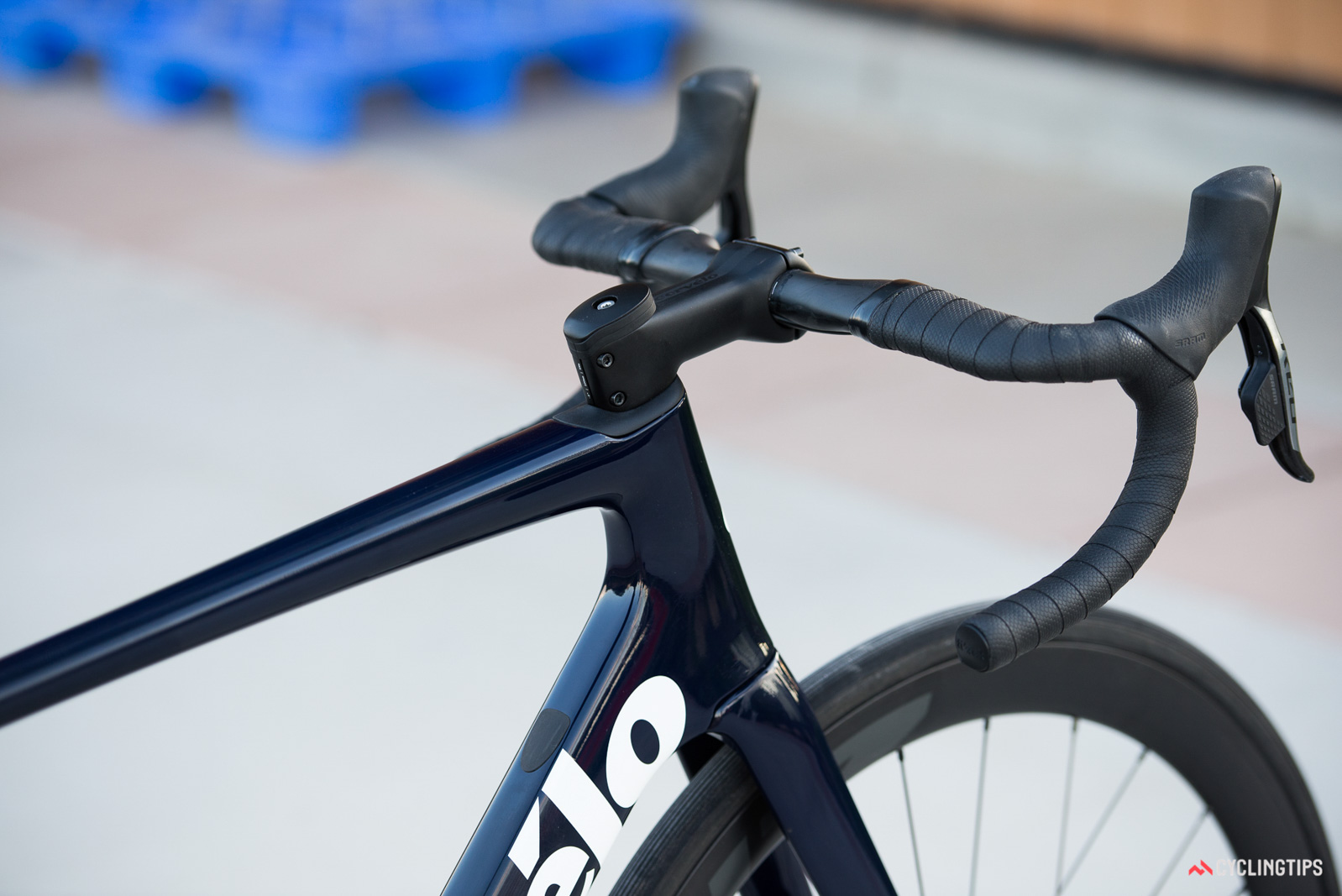
These tube profiles are close to the S3’s.
According to Scott Roy, Cervelo’s engineering liaison with Sunweb, the team found the current R3 a little skittish over the cobbles of Roubaix, and as a result, they looked to the stiffness profile of the old R3 Mud. Coincidentally, the R3 Mud closely matched the stiffness figures of the Aspero gravel bike, and that’s what the Caledonia’s vertical stiffness has been based on. However don’t think this is a flexible bike — we still feel the Aspero, a bike still built for racing, is plenty stiff.
Built for the Classics, Cervelo admits this isn’t the lightest frame. According to Roy, that extra material not only helps with frame durability, but it aids in vibration damping for the Roubaix racer. The result sees a medium painted weigh 936 g (claimed), with the fork at 370 g.
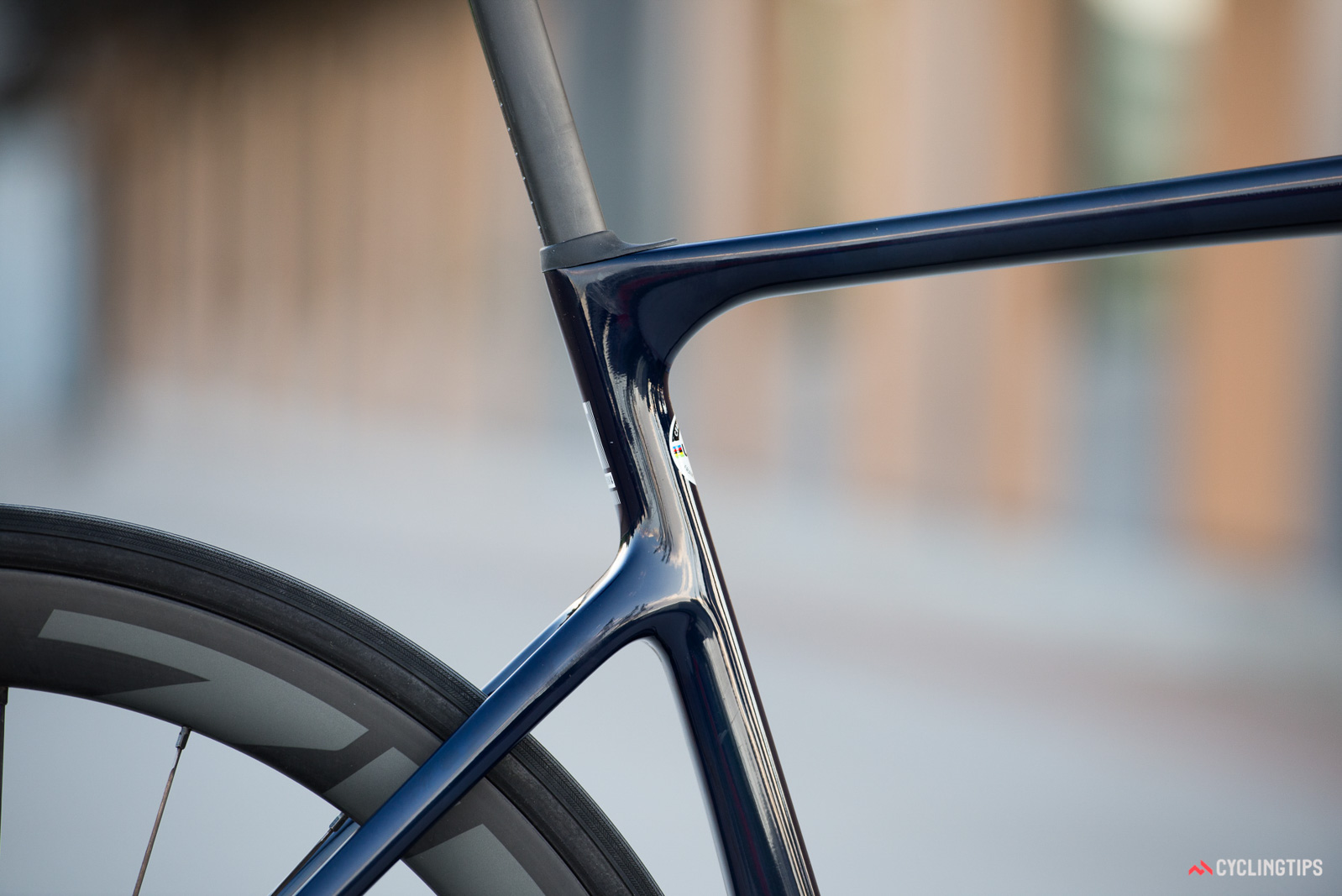
The Caledonia 5 shares the same D-shaped seatpost as the R5.
In the case of the Caledonia 5, the seatpost, stem and handlebar are all specific to Cervelo, too. That seatpost is the same D-shaped carbon item found on the R5, and it’s intended to aid in seated comfort. And while the fork steerer shares a similar profile, the design isn’t intended to add comfort. Instead, Roy suggested that the longitudinal fork stiffness is flexible enough that they don’t feel the need to add special comfort-inducing features.
Other frame features include a removable front derailleur tab for the option of clean 1x setup, while Cervelo is sticking with its BBRight bottom bracket design, an offset and wider version of PF30.
Caledonia 5 versus Caledonia
The Caledonia is certainly built to compete with a number of flagship offerings out there, and as such, it’s priced that way, too. However just as most brands offer multiple grades of their carbon bikes, so does Cervelo, and if the Caledonia 5 is a little too dear, then the Caledonia is worth considering.
By comparison, the Caledonia comes with the same geometry figures, is claimed to offer identical stiffness figures, the same tyre clearance and the same stealthy fender mounts. What changes? The frames move to a lower grade carbon that sees the frame weight increase by 95 g (1,031 g claimed) and the fork adds 63 g (432 g).
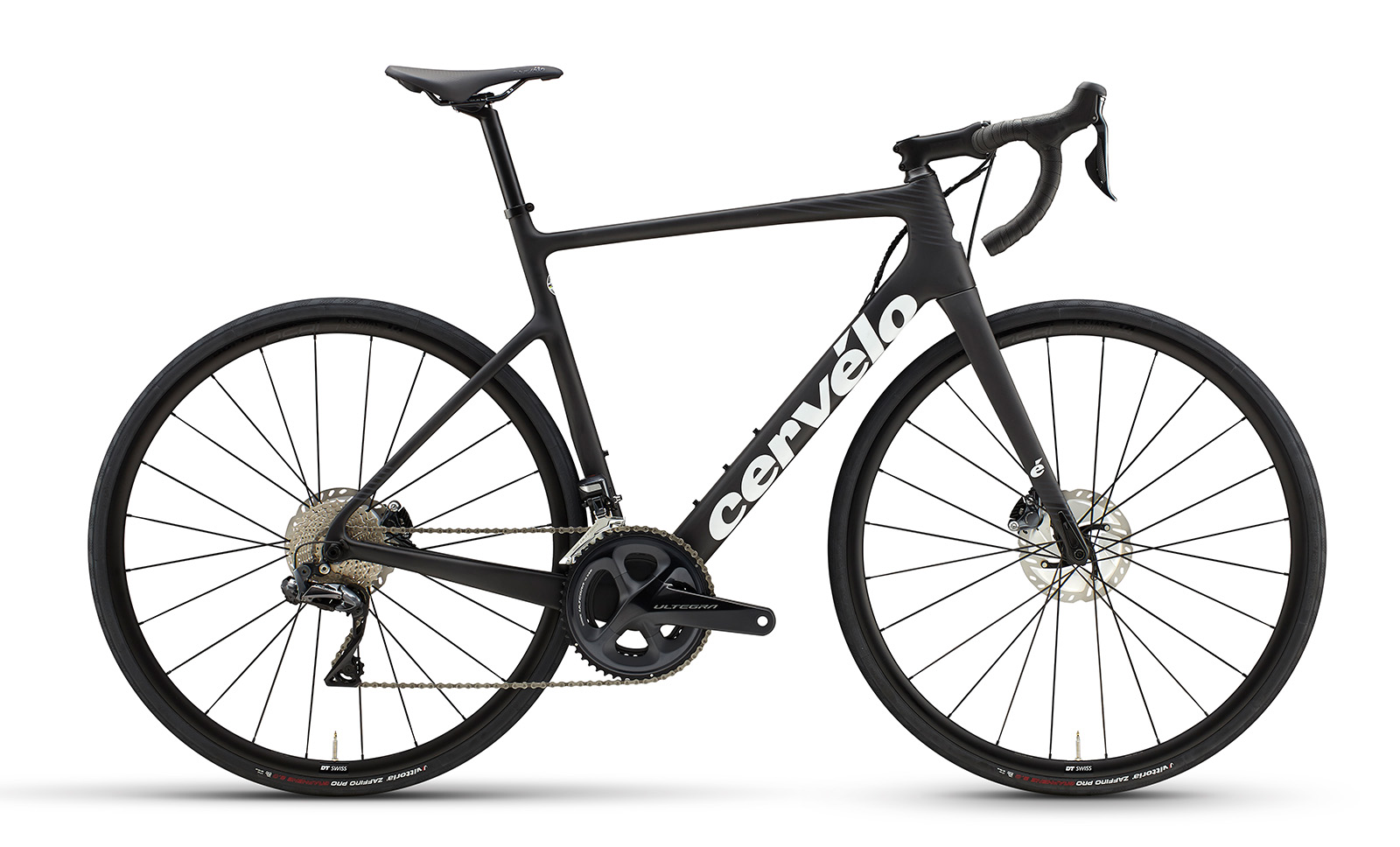
The Caledonia range moves to exposed cabling at the front end (which is then routed through the frame).
The cheaper Caledonia also loses the fancy integrated cabling, accompanying cockpit, and the D-shaped seatpost, instead moving to standard (and round) stems, handlebars and seatposts respectively. This means the Caledonia will offer less seated compliance, although we’re talking small differences (Cervelo suggests the D-shape post offers roughly 7-8% more compliance than a round post, depending on set-back and exposed length). On the bright side, the simpler cockpit allows the use of mechanical shifting drivetrains, something that’s critical at more affordable price points.
What the Caledonia gains over the Caledonia 5 is Bento bag mounts on the top tube, which means the bike can go at least three hours further on rougher terrain (or not). Lower prices also provide the ability to feed your family.
Models, pricing and details
There are five bike models and a frameset option in the Caledonia 5. The lower cost Caledonia sees three models offered.
The top three models of the Caledonia 5 feature powermeters, with Quarq units supplied with the SRAM bikes, and 4iiii power on the Shimano Dura-Ace Di2 bike. Two of the Caledonia 5 bikes feature carbon wheels from the newly announced Reserve road line.
Details and international pricing are in the gallery below.
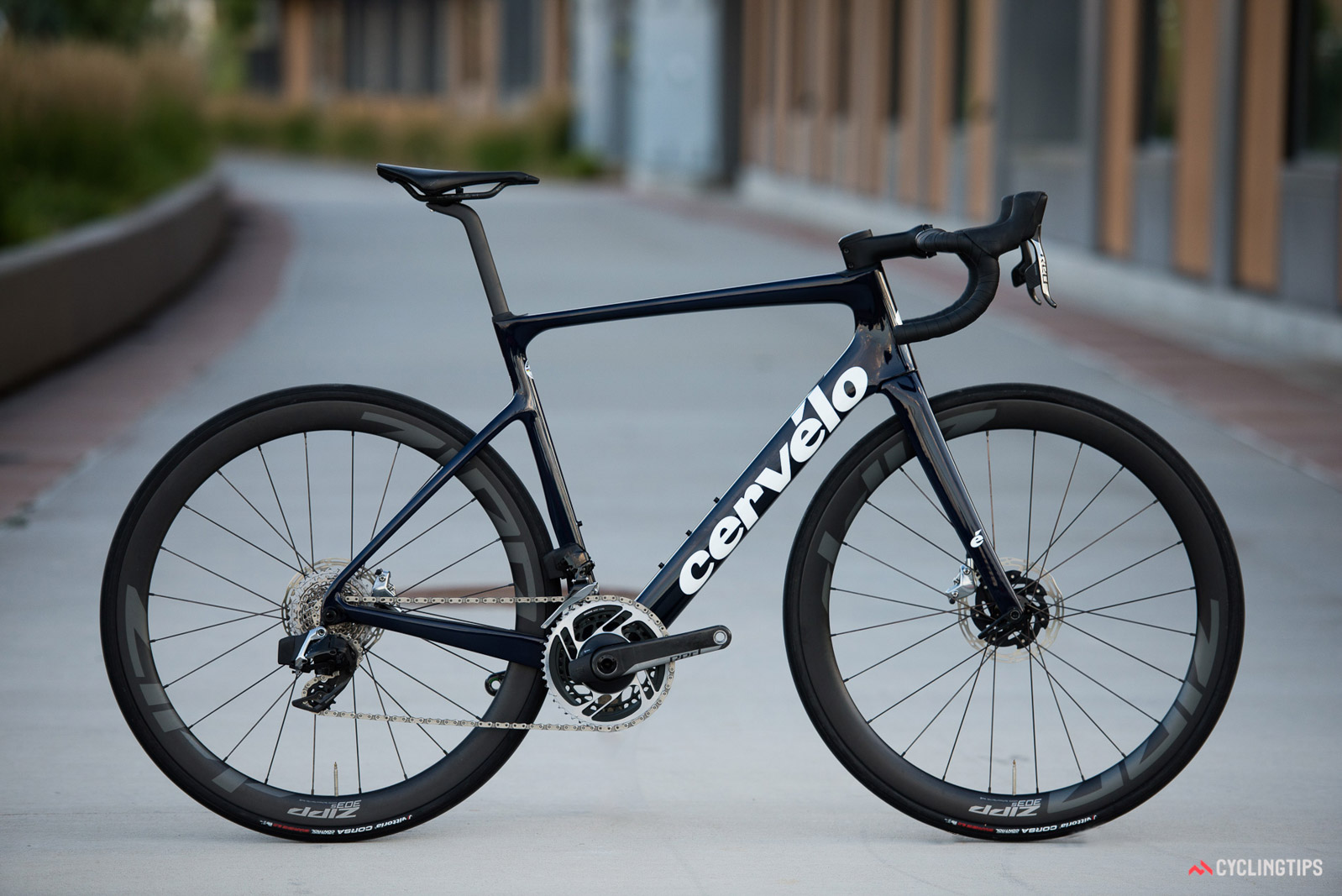
As tested, the Caledonia 5 Red eTap AXS (US$10,000 / CAD$13,000 / €10,499 / £9,299 / AU$15,000). This full-SRAM build offers a Red eTap AXS groupset, matching power meter and the new Zipp 303 S wheels. The frame colour is “blue carbon”.
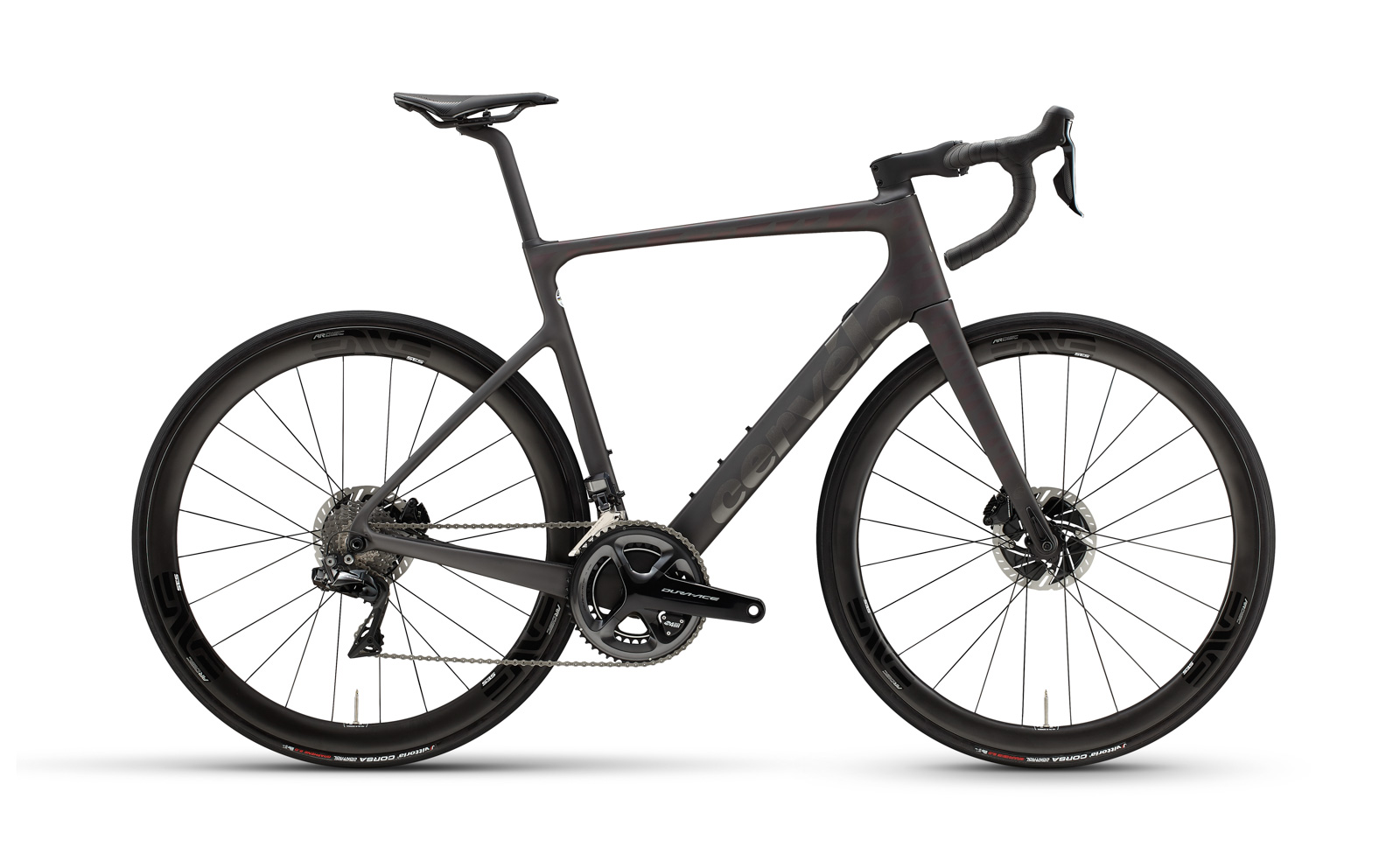
Caledonia 5 Dura-Ace Di2 (US$11,000 / CAD$13,500 / €10,999 / £9,699 / AU$14,500). Featuring a Shimano Dura-Ace Di2 groupset, 4iiii dual-sided power meter and Enve SES 3.4 AR wheels. The frame colour is “carbon/chameleon”.
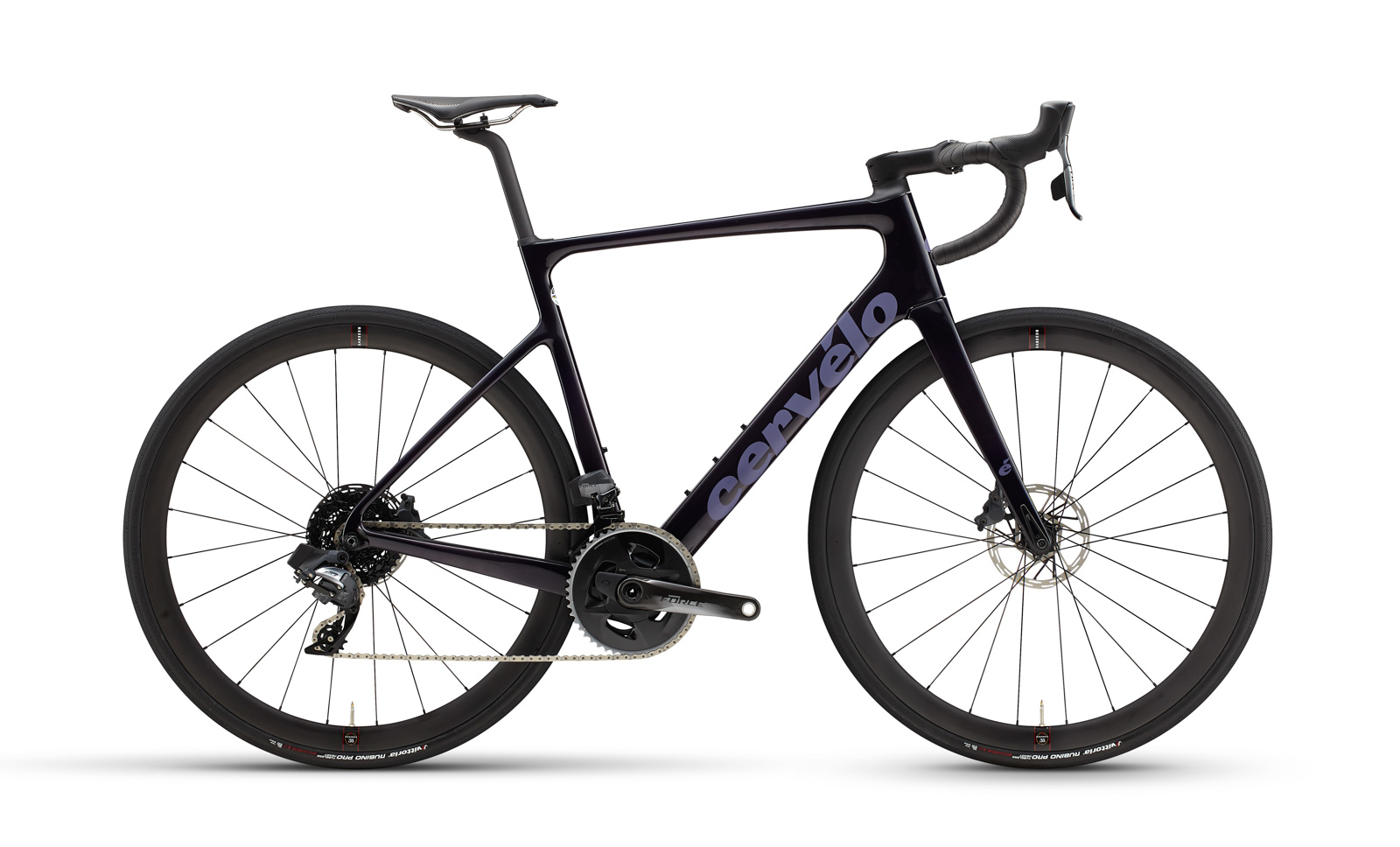
Caledonia 5 Force eTap AXS (US$7,000 / CAD$9,400 / €7,199 / £6,399 / AU$10,500). Equipped with a SRAM Force eTap AXS groupset, matching power meter and the new Reserve 35 mm wheels built with DT Swiss 370 hubs. This model, and those below it, move to the heavier alloy stem. The frame colour is “purple carbon”.
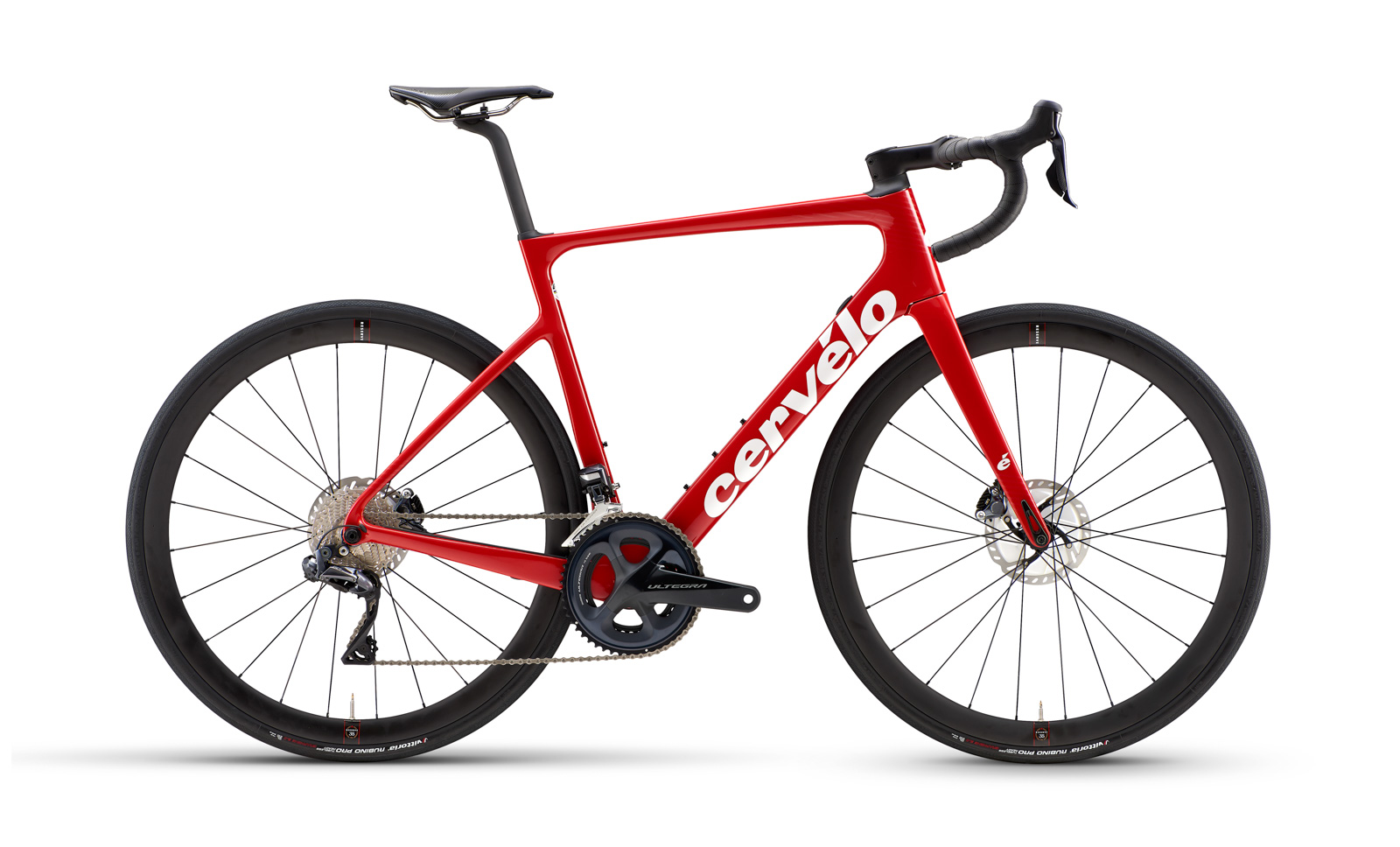
Caledonia 5 Ultegra Di2 (US$6,500 / CAD$8,700 / €6,599 / £5,799 / AU$9,700). A Shimano Ultegra Di2 groupset and the same Reserve wheels as the model above. The is available in two colours, silver/black or red/white.
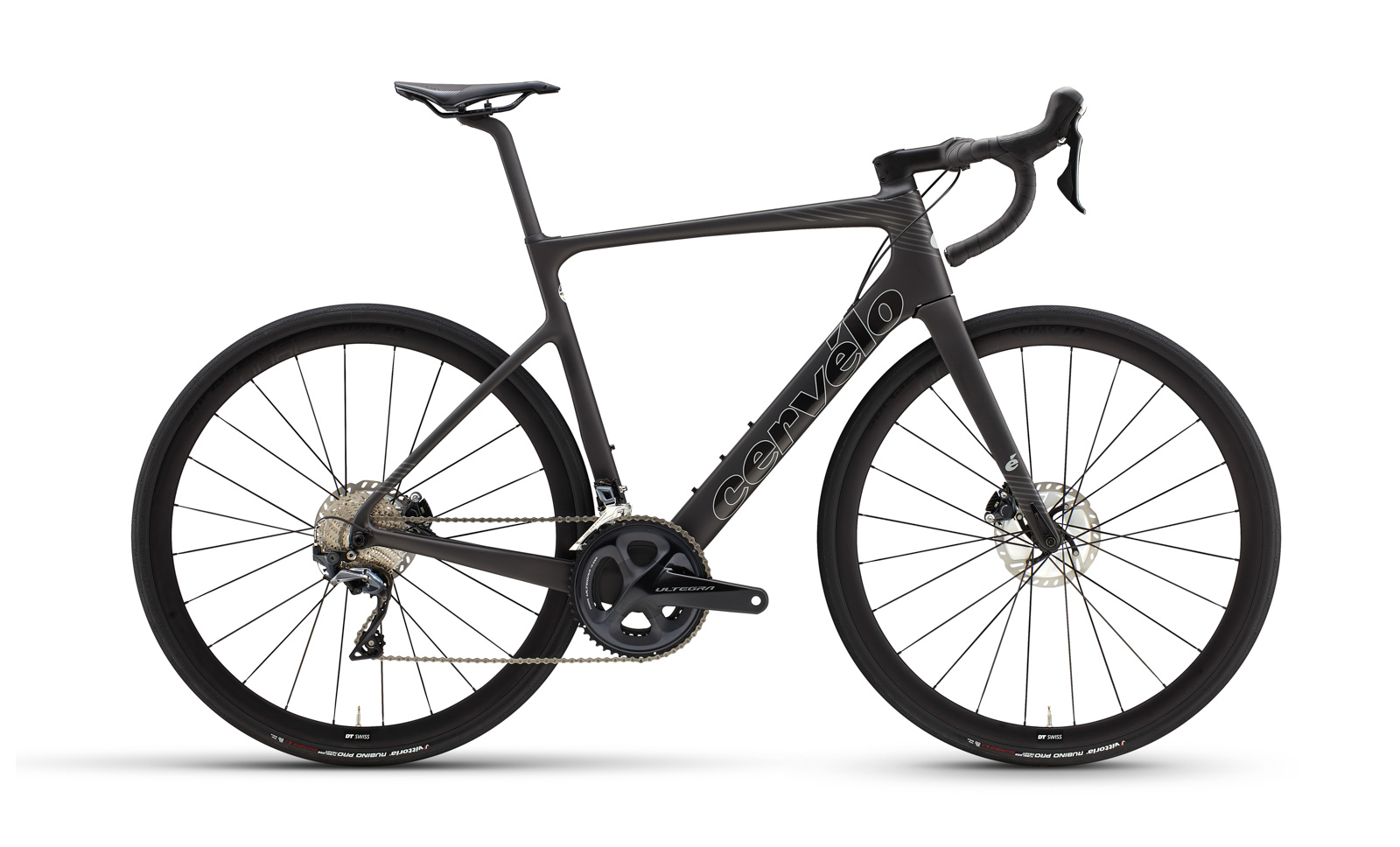
Caledonia 5 Ultegra (US$5,000 / CAD$6,700 / €5,999 / £5,299 / AU$na). This model moves to mechanical shifting with a Shimano Ultegra groupset. As a result, the gear cables are routed external of the handlebar/stem (brake hoses are kept internal). DT Swiss E1800 32 Spline wheels feature on this model. The frame colour is “carbon charcoal”.
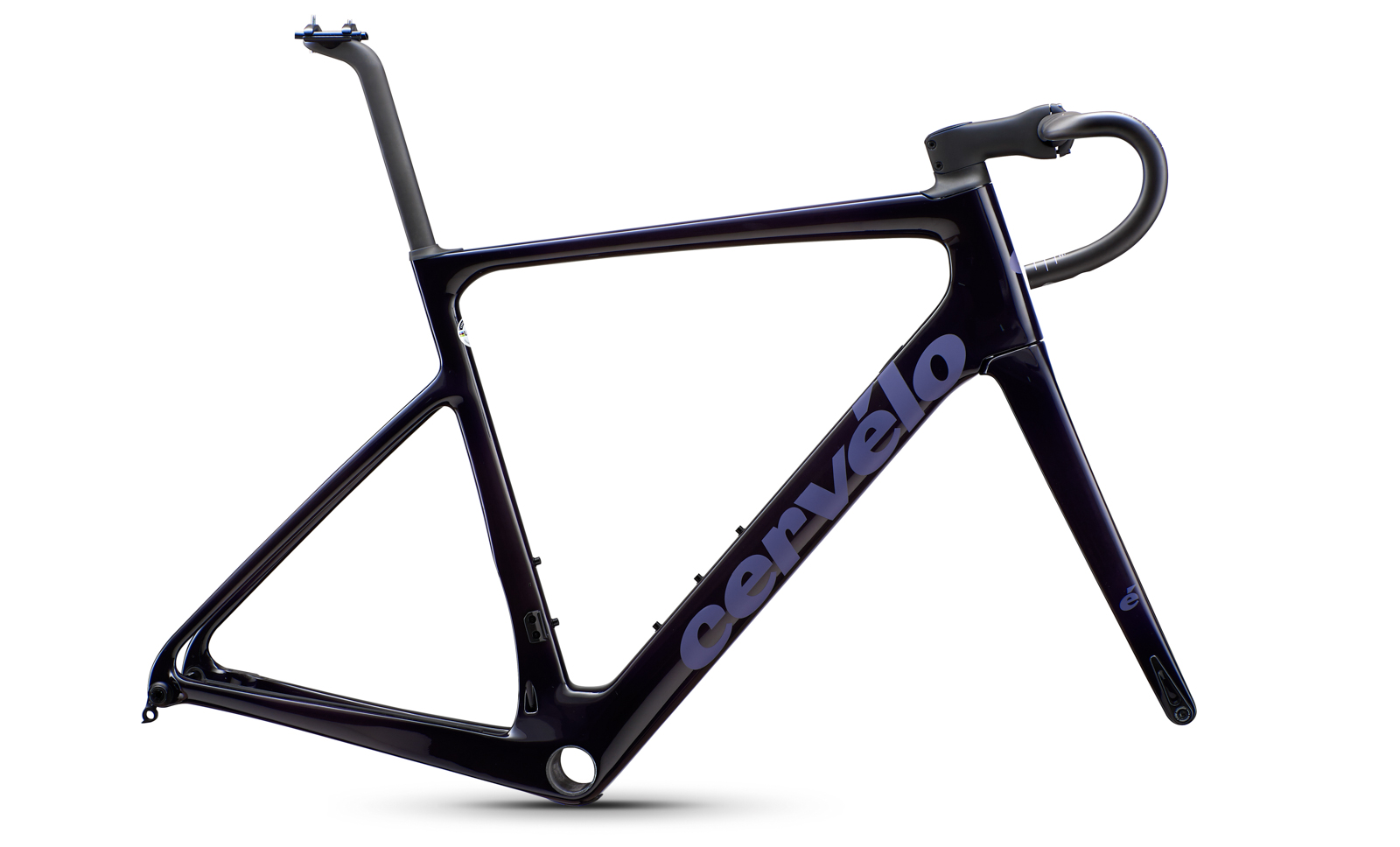
Caledonia 5 Frameset (US$4,300 / CAD$6,000 / €4,499 / £3,999 / AU$6,400). The frameset includes Cervelo’s own carbon handlebar, stem and seatpost. This is available in four of the colour options that make up the bike lineup.

Caledonia Ultegra Di2 (US$4,500 / CAD$6,000 / €4,799 / £4,199 / AU$6,900). A full Shimano Ultegra Di2 group is matched with DT Swiss E1850 23 Spline wheels. The seatpost, stem and handlebar are all aluminium. This is available in a black/white paint.
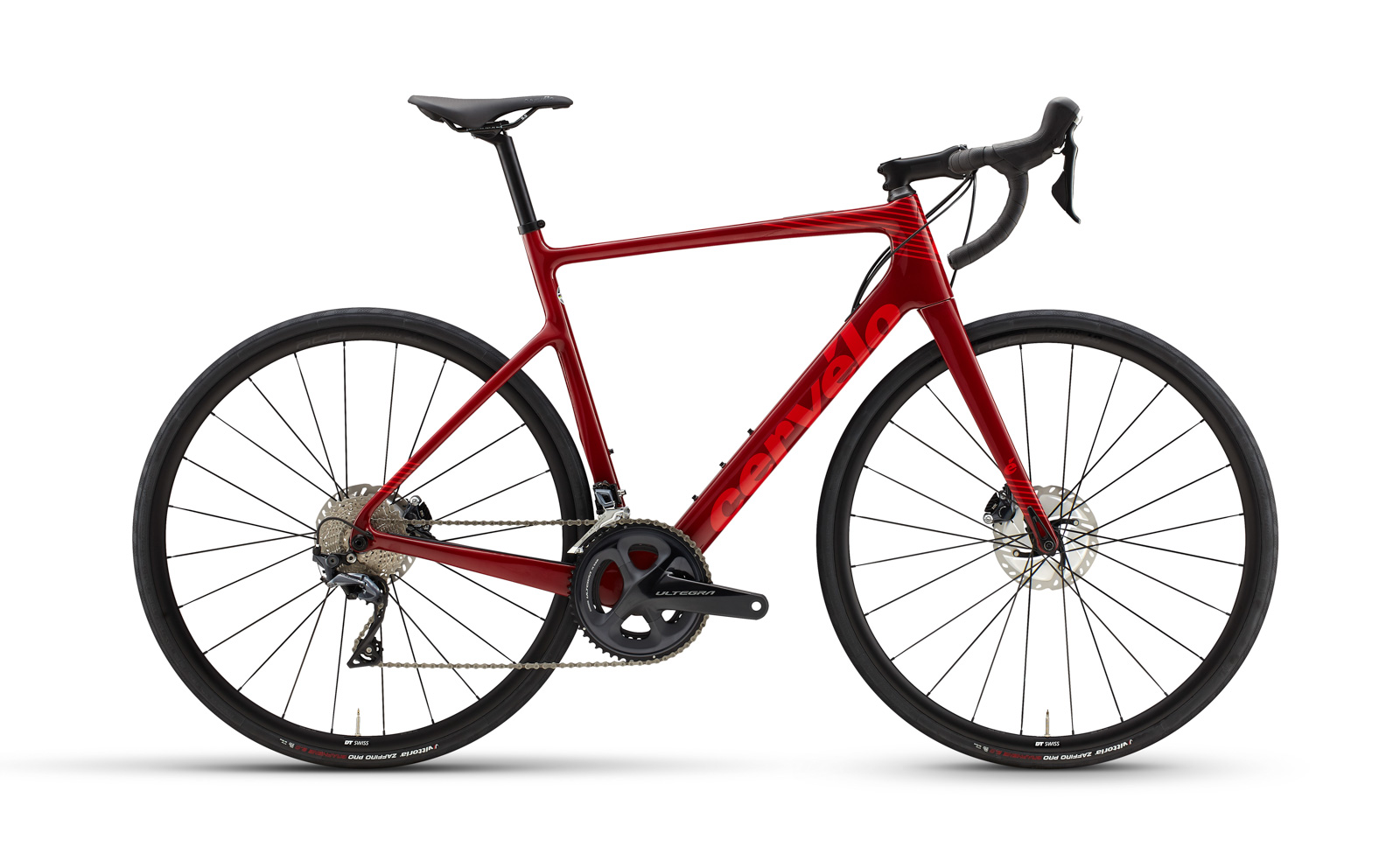
Caledonia Ultegra (US$3,500 / CAD$4,800 / €3,799 / £3,399 / AU$5,400). A Shimano Ultegra mechanical group features, otherwise the build is the same as the Di2 model above. There are two colour options for this, maroon/red and black/white.
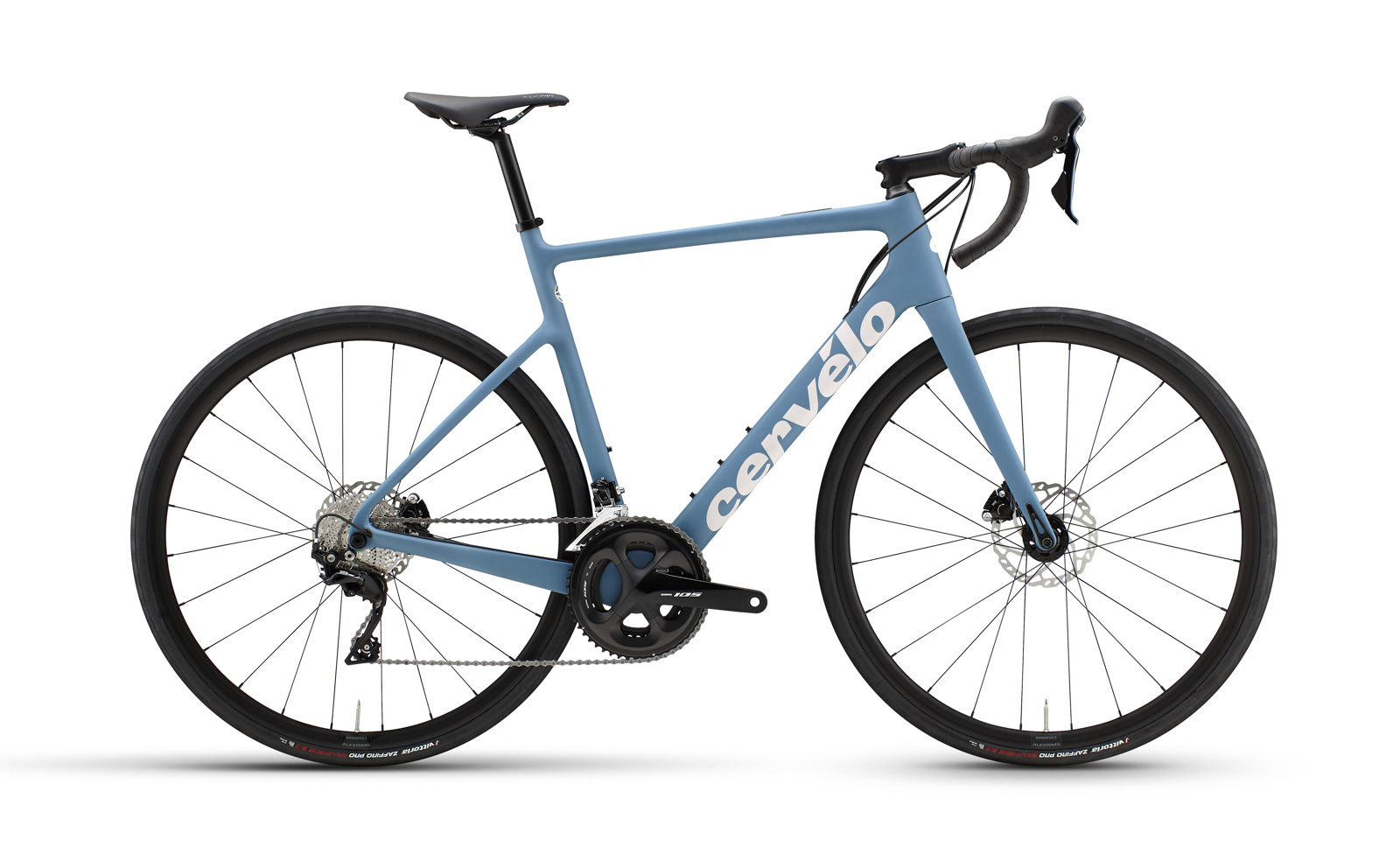
Caledonia 105 (US$2,900 / CAD$3,900 / €3,199 / £2,799 / AU$4,300). The cheapest bike in the new Caledonia (not to be confused with the place), this one offers a Shimano 105 groupset and Alexrims Boondocks-5D tubeless-ready wheels. There are two colours to choose from, the maroon/red or an indigo/walnut (sounds delicious).
Over to you, Caley.
How it rides
To be clear, I have only ridden the Caledonia 5 twice. It showed up 36 hours before the media embargo lifted. This ride review is therefore more like a traditional, pre-COVID product launch “first ride” sort of thing than a real review. We’ll publish that in a few months’ time.
That said, first impressions often hold over the long term. And I have many first impressions of this bike.
The Caledonia is fast. This isn’t something I expected from it, to be honest. Whenever a brand starts talking about “a bike built for Paris-Roubaix” I translate that as “a bike for people who will never, ever ride Paris-Roubaix.” There’s nothing wrong with this — I won’t ride Roubaix, either — but it often feels somewhat disingenuous. I sort of doze off and start thinking of tall, slack, slow-to-react frames designed to be stable above all. Frames that actual pros at Roubaix would hate. The Caledonia isn’t one of those. It’s not twitchy, but it’s not slow to react, either.
The great thing about these modern all-road bikes is that they really can have multiple personalities. With the stock 28 mm tires, which spread out to just over 29 mm on the wide Zipp wheels, the sharp trail figure lends a corner-friendly feel to the bike. It wants to get up and go. It’s stiff, particularly the front end. In this 28 mm configuration, it isn’t particularly comfortable, either.
There aren’t any gimmicks on the comfort front, no special flexy carbon bits or head tube shocks, and so it doesn’t wow you with its smooth ride. The D-shaped seatpost out back helps, but the front end has nothing to match. I appreciate this simplicity; comfort can come from elsewhere, if I want it. Specifically, from tires.
For my second ride, I threw some 35 mm gravel tires on (yes, it technically only fits a 34, but also yes, it fit a 35 easily) and that slowed the handling a bit, making it feel quite a bit like Cervelo’s own Aspero, one of our favorite fast gravel bikes. It made the bike comfortable, too. The dirt roads I’d taken it on earlier lost their bite.
Riding the bike in both configurations made me want to try it in the middle. The Caledonia is just begging for a fast, plush 30 or 32 mm slick, capable of going just as fast as a 26 or a 28 but so much more comfortable and capable. If I owned this bike, that’s how it would be set up most of the time.
This is a relatively traditional feeling road bike that, when it lays its head down at night, has fitful dreams of dirt roads and smooth gravel. It’s fast, the integration and shapes are gorgeous, and it’s capable of expanding its capabilities well beyond tarmac. I’m very much looking forward to getting more time on it.
Gallery

Introvert. Beer guru. Communicator. Travel fanatic. Web advocate. Certified alcohol geek. Tv buff. Subtly charming internet aficionado.